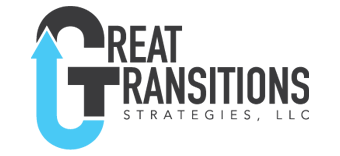What if you could prevent workplace burnout in yourself and in your team? Would you do it?
Do you know the top seven drivers of workplace burnout? They are:
- workload and job demands
- lack of control
- lack of rewards/recognition
- lack of community support
- conflicting values
- lack of meaning in one’s work
Each driver is influenced by leadership, the leadership of the organization and the personal leadership of the individual. Coaching has a positive impact on reducing or preventing burnout in individuals, teams, and assisting leaders of organizations to prevent or deal with burnout of their subordinates.
If you are unfamiliar with professional coaching, relate it to sports. Think of your professional coach as a partner to assist you to play better and attain your professional goals.
Coaches assist individuals to better understand themselves; their strengths, weaknesses, tendencies, values, goals, and aspirations. In the process of coaching, individuals and teams change their behavior to be more effective and attain their goals. Changes in behavior and mindset are some of the results of coaching.
Coaching the Individual to Reduce Burnout
A client typically comes to a coach looking to make career progress to be proactive in their career progression or reactive to ongoing challenges.
“I am totally exhausted with my position; I need a change.” This is what I heard from a client. As we progressed in our coaching, she came to the conclusion she was experiencing burnout.
She also identified the drivers dealt with daily. Working remotely, she made herself accessible 24/7, could not say no, and had significant conflicts she would not address with her demanding boss. High workload, lack of control, and conflicting values.
Through coaching she came to her solution; work to establish clear boundaries around her workday, learn to tactfully say no, and deal with the conflicts with her boss.
The result. She reduced the intensity of several burnout drivers. Improved consistency in her workload, gained more control of her work life, and improved her relationship with her boss.
Coaching the Leader
How does coaching the leader reduce burnout?
When I coach leaders, guess the number one topic? It is to assist them determine how effective they are and how to get better. Think of yourself as the leader I am working with in the following.
You seek out individual coaching to improve the results of your team. You are suspecting burnout may be an issue. I ask what type of performance data you have.
We start with a discussion of the unsolicited feedback. As you know, feedback comes your way whether you ask for it or not. What messages are the levels of performance and issues brought to your attention daily telling you?
If that is not enough data, you can ask for it directly with a simple survey or other methods on the seven drivers of burnout. You are looking for existence of the drivers that are creating the symptoms of burn out: exhaustion, negative feelings and cynicism, and reduced efficacy.
Usually the level of engagement, production, and individual actions will be screaming at you.
If your team or individuals are suffering from burnout, the revelation will not take long.
Coaching helps you interpret that data, build self-awareness of how you lead, and helps foster behavior changes in you to improve your effectiveness. Coaching holds a mirror up to you and reflects back your behavior and their results. It also helps you assess your situation from several perspectives with an objective source.
Coaching the Team
Teams can burn out as well. Ensuring the team has the right conditions in place is most effective. My focus with teams is to establish the six conditions of team effectiveness. The conditions directly address preventing the seven drivers of burnout.
The six conditions require a team to set a clear purpose – to provide meaning to the team’s work. Ensure the team is a real team with the right mix of skills and capabilities and have the resources to function effectively. Establishing the norms of behavior for the team can be a critical element of preventing burnout. Properly established norms, provides avenues for the team and its members to address each driver of burnout as it begins to manifest itself.
Summary
Burnout is preventable and coaching is an effective tool to assist individuals, leaders, and teams to correct and prevent it.
How could coaching combat burnout in your organization with individuals, leaders, and teams?






